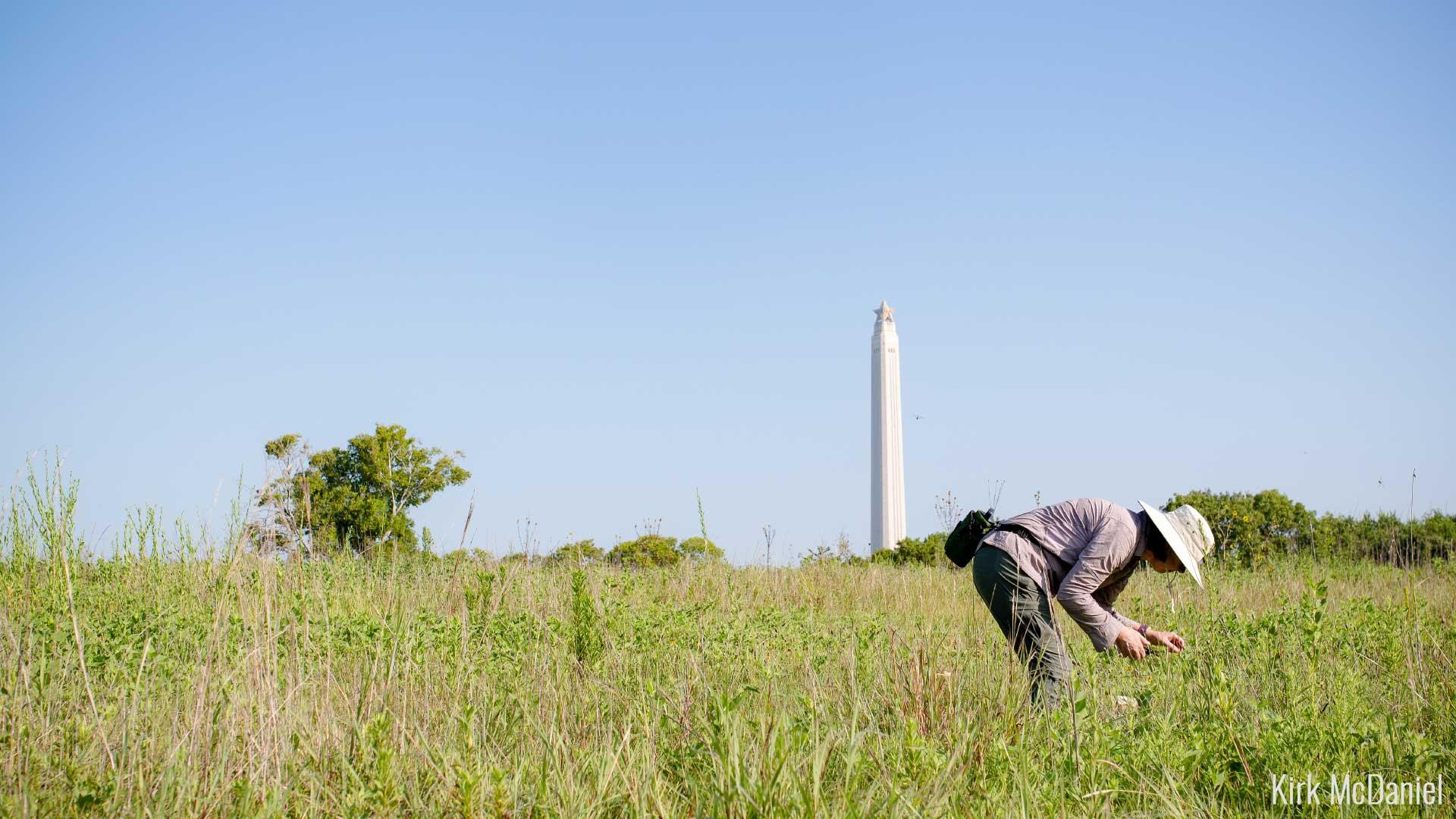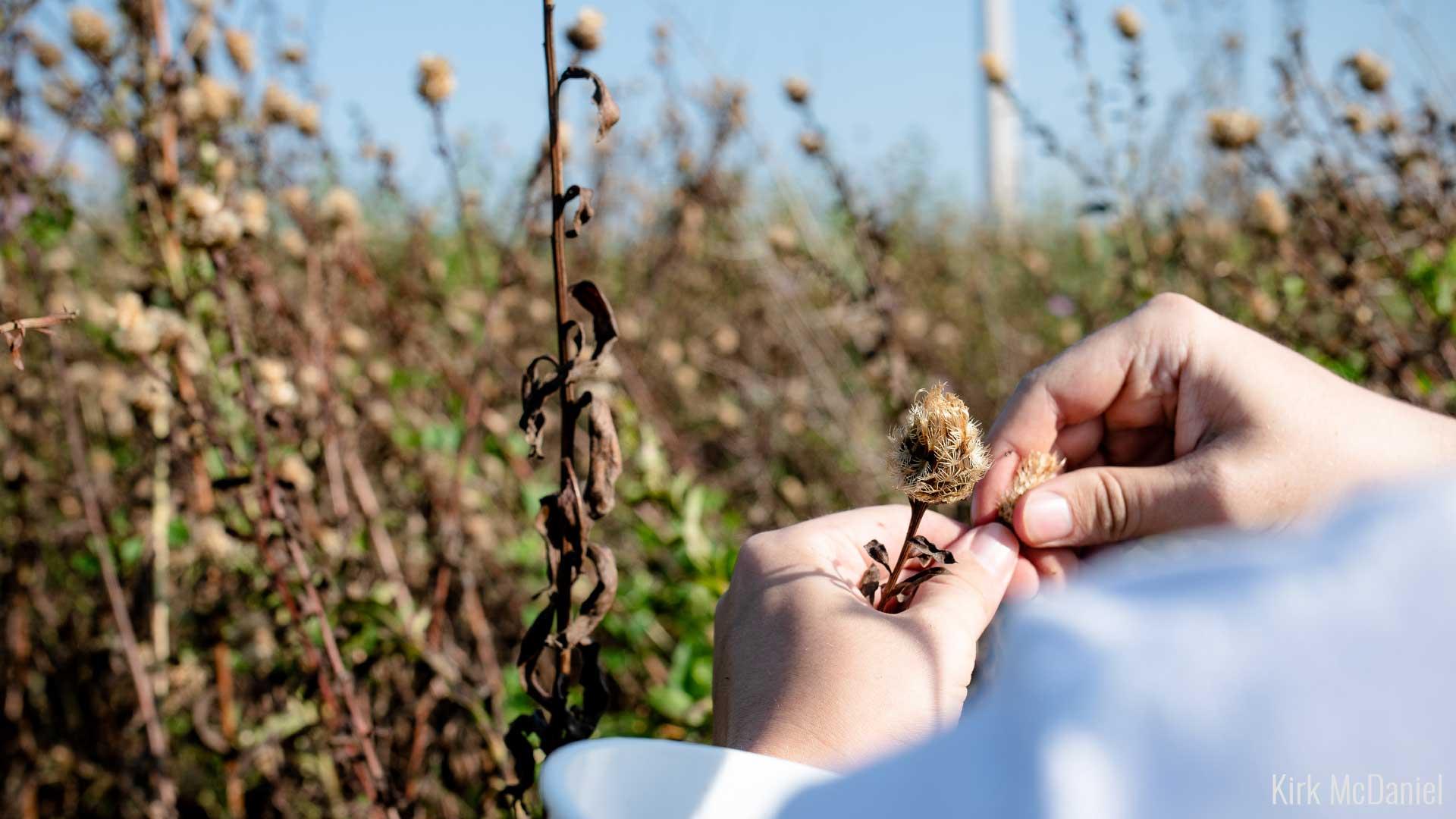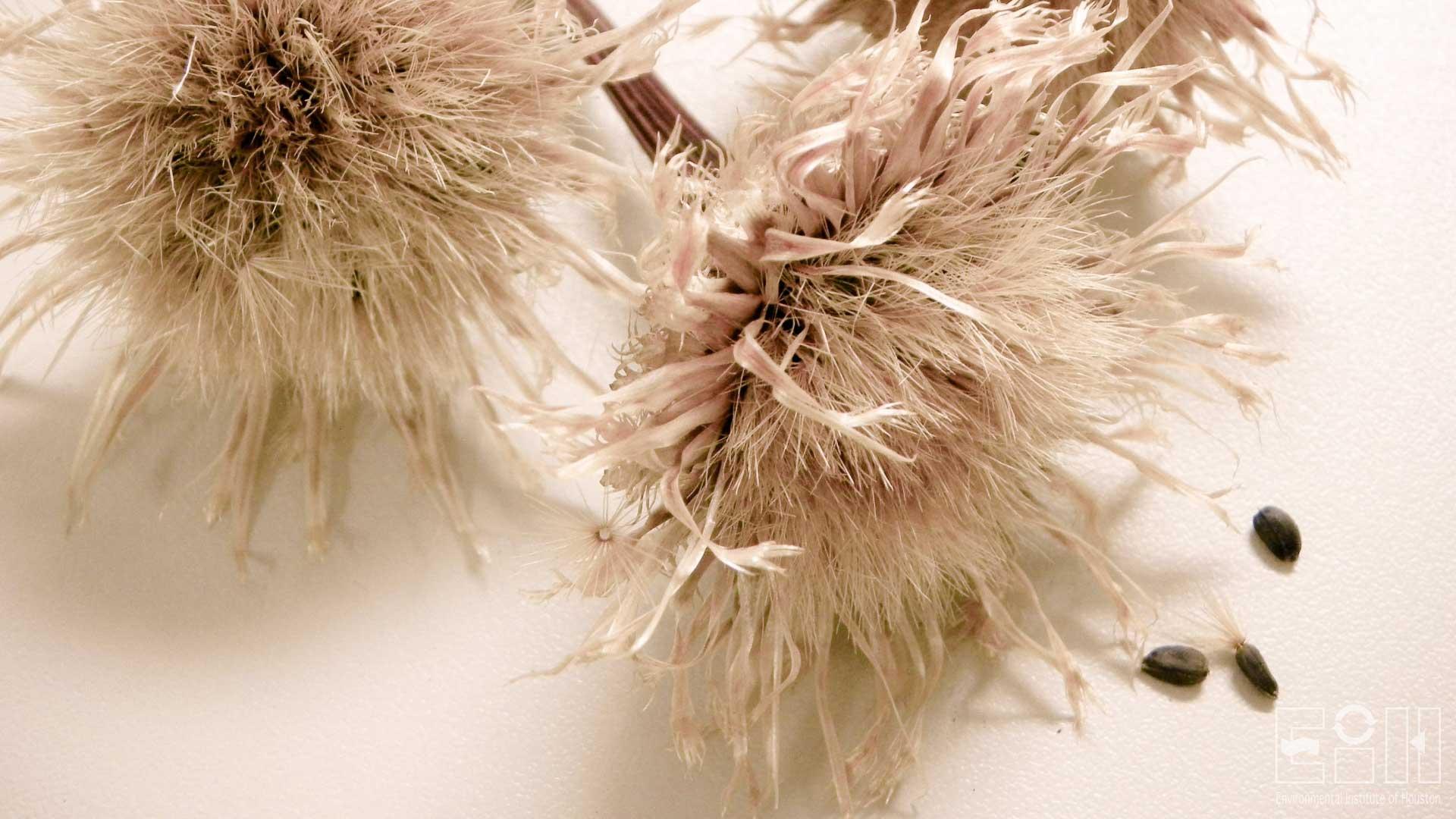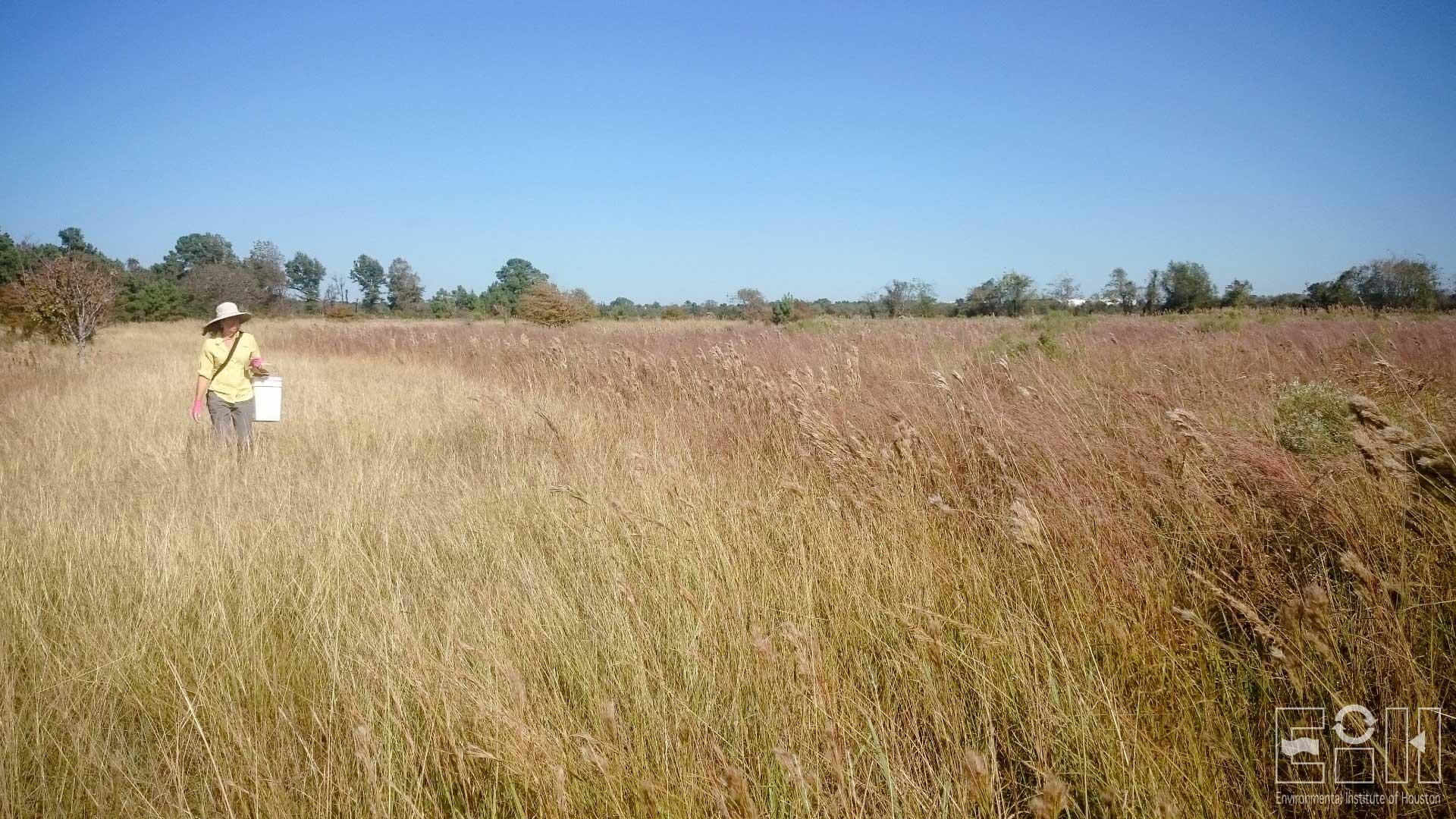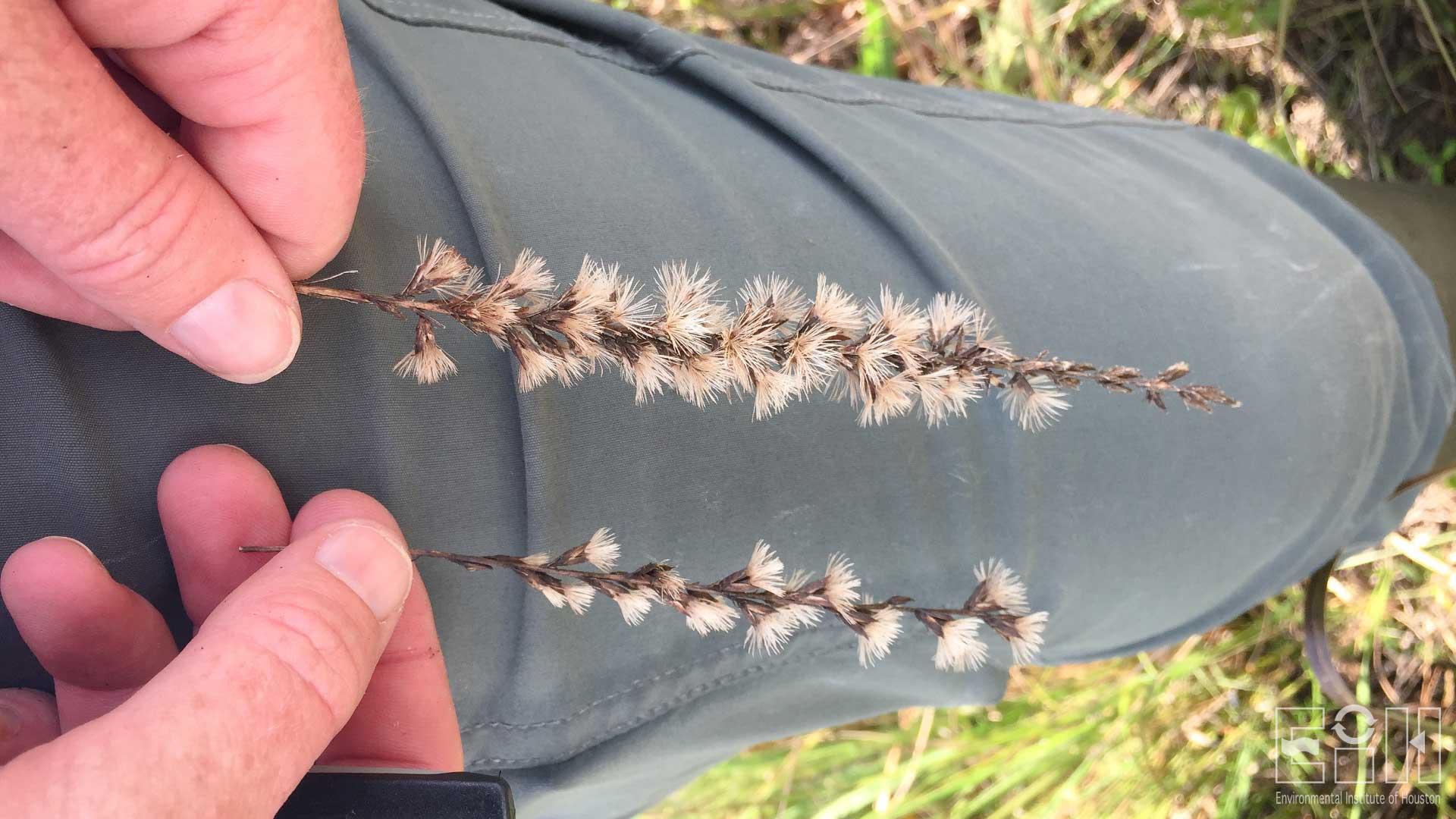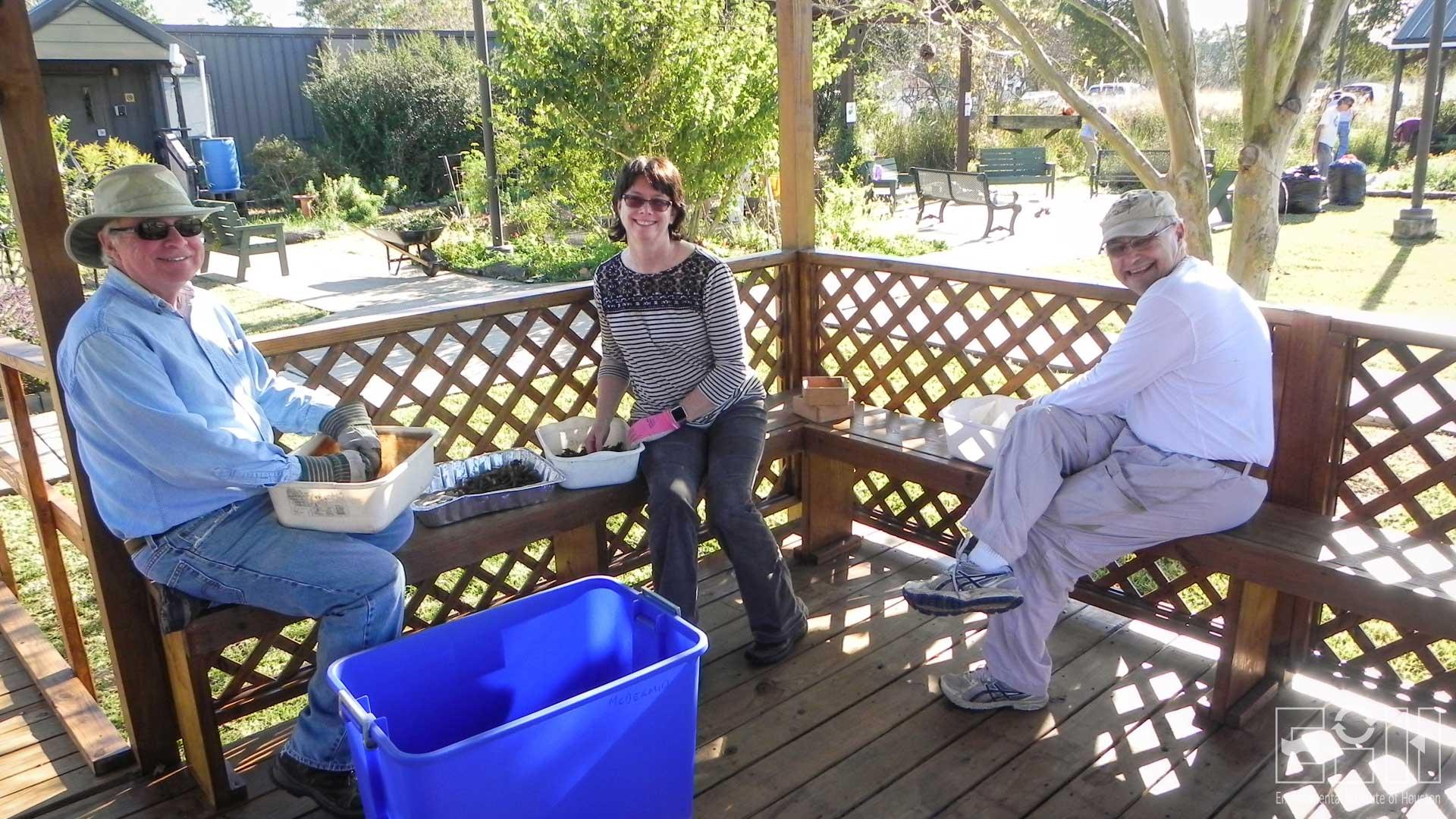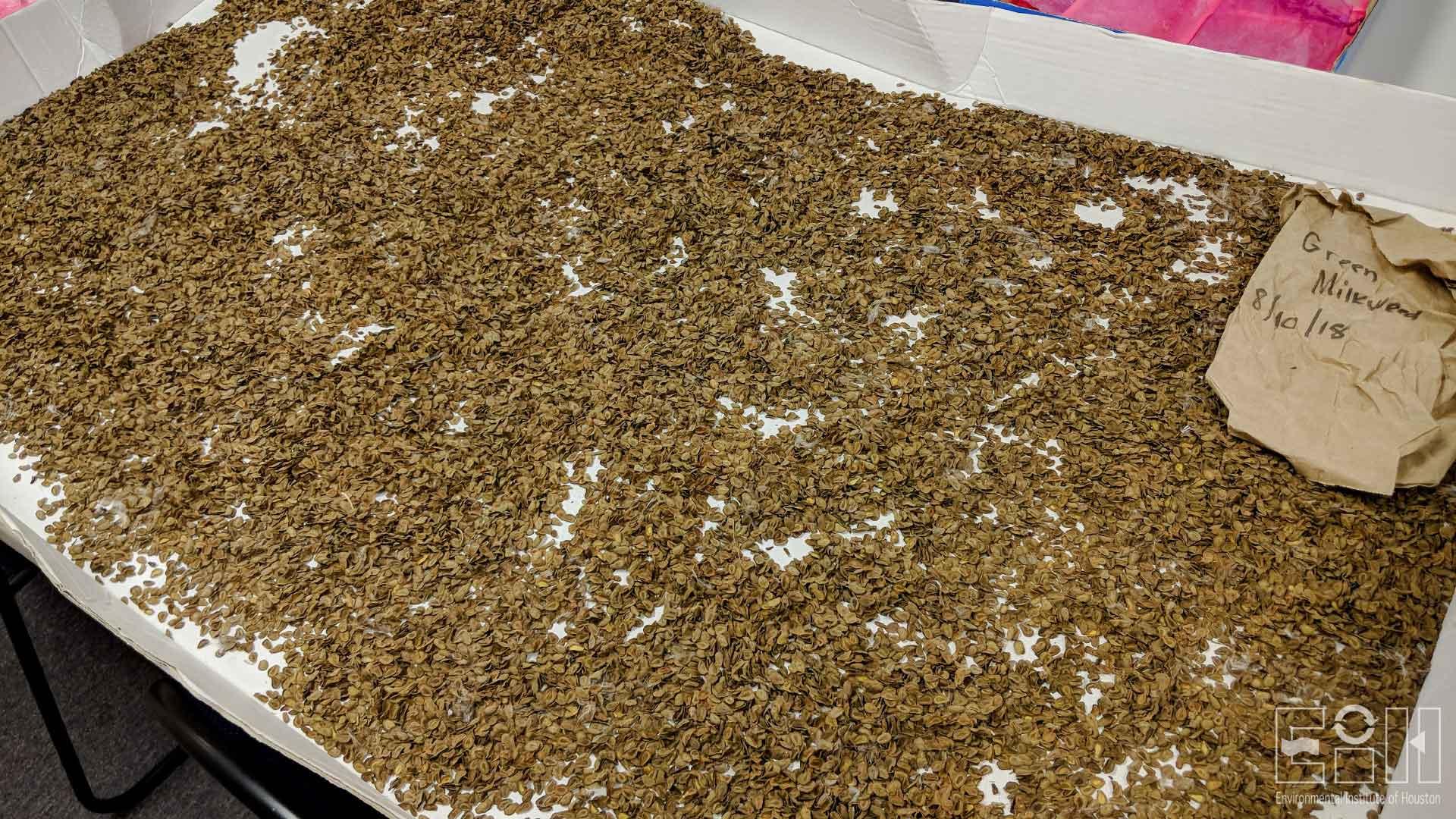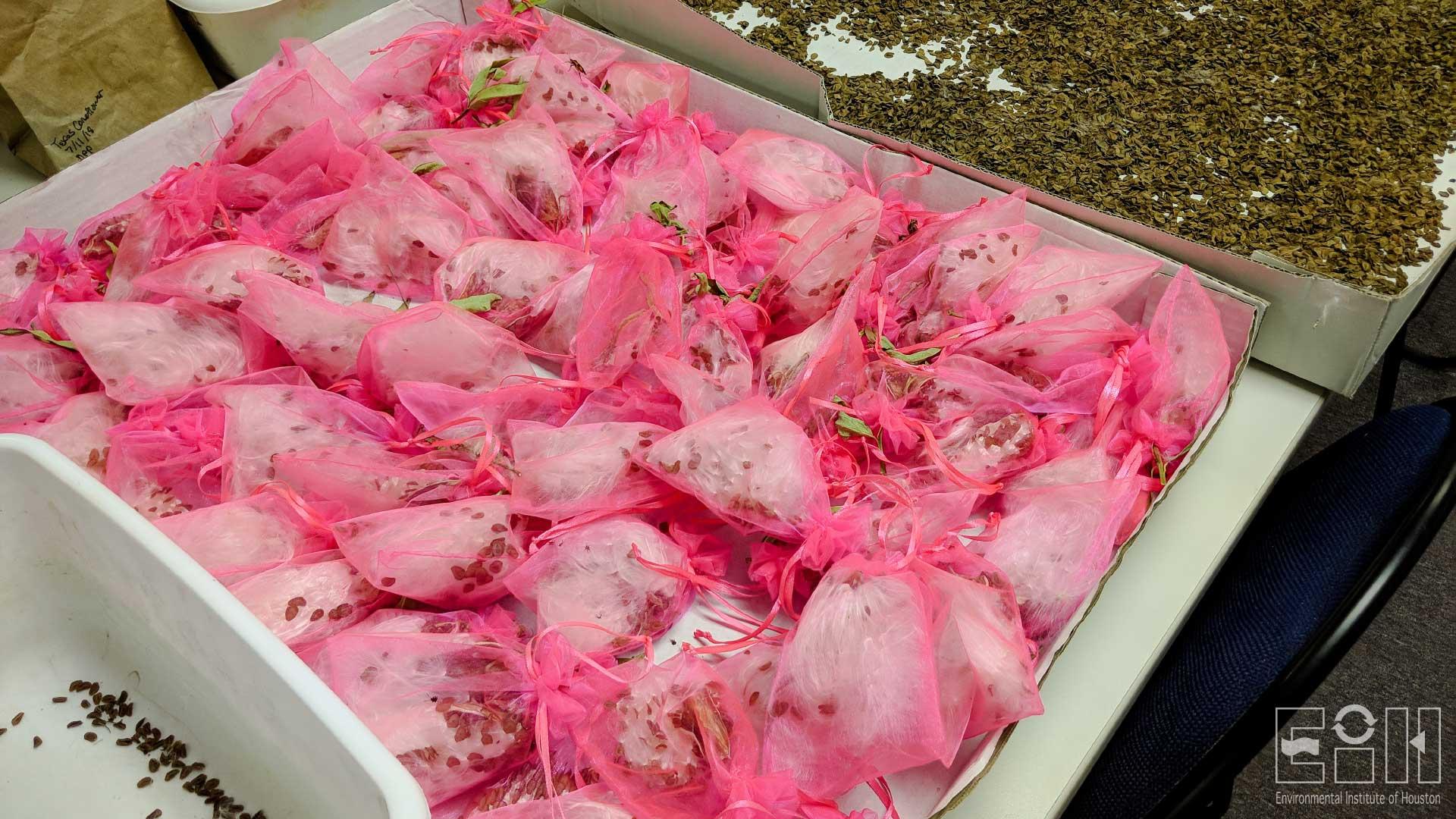
Coastal Prairie Restoration: The Seed Collection Project
Sheldon Lake State Park is a 2800-acre outdoor education and recreation facility, specializing in the introduction of urban youth to the out-of-doors and wildlife. Historically, the land was open coastal prairie dotted with marshes and mottes of pine/oak savanna. Some of the land was plowed for farming beginning in the 1930s, and by the 1950s approximately 800 acres of the land had been cleared of prairie and were being used for growing crops. The wetlands within these farm fields had been drained and filled through land leveling. The property was transferred to the State Parks Division in the 1980s, and restoration of the tall grass prairie started in 2003. About 400 acres of the Park have been restored, and this project will help restore an additional 70 acres.
Volunteers
Volunteers are an integral part of this project. Texas Master Naturalists, UHCL students, and community volunteers helped with seed collection and/or seed cleaning.
What We Pick
| Forbs* | Grasses* |
|---|---|
| Asclepias spp. (milkweeds) | Paspalum plicatulum (brown seed paspalum) |
| Coreopsis spp. (coreopsis) | Sorghastrum nutans (yellow Indian grass) |
| Eupatorium spp. (boneset) | Tridens strictus (long spike tridens) |
| Liatris spp. (gayfeather) | Andropogon gerardii (big bluestem) |
| Ratibida spp. (Mexican hat) | Schizachyrium scoparium (little bluestem) |
| Rudbeckia spp. (Texas coneflower) | Bothriochloa laguroides (silver bluestem) |
| Centaurea americana (American basketflower) | Muhlenbergia capillaris (gulf muhly grass) |
| Gaillardia spp. (Indian blanket) | Panicum virgatum (switch grass) |
| Monarda spp. (bee balm) | Tripsacum dactyloides (gama grass) |
| Salvia azurea (blue sage) | Andropogon virginicus (broom sedge) |
| *any native species | *any native species |
Where We Pick
For this project, seeds are collected from native prairie remnants within a 50-mile radius of Sheldon Lake State Park. Collection sites include state parks, University of Houston Coastal Center, Armand Bayou Nature Center, Nature Conservancy properties, hay fields, and undeveloped sites. Restoration sites such as Exploration Green are not used as collection sites.
After We Pick
After the seeds are collected, they are brought back to the institute's offices where they will be dried, cleaned, and stored.







